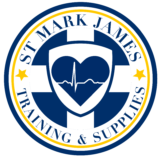Motion sickness is the feeling that an individual gets once the motion sensed within the interior ear is different from the motion being visualized. This is considered as a common condition that typically manifests in some individuals who travel by train, car, boat or airplane. Some suffer from this condition if they ride on roller coasters or other comparable park rides in amusement parks. The condition initially starts as a feeling of uneasiness to sweating and eventually followed by nausea or vomiting.
Who are at risk for motion sickness?
Even though pregnant women and children are prone to motion sickness, anyone who travels is at risk for the condition. When traveling by boat, seasickness is regarded as a type of motion sickness. Other possible risk factors include the type of travel, lack of windows, poor ventilation and fear or anxiety of the individual about travel.
Causes of motion sickness
Motion sickness is caused by the combination of signals transmitted to the brain by the eyes and the inner ear. If an individual could not see the motion the body feels, or once the individual could not feel the motion the eyes see, it is likely that the brain will receive mixed signals. In no time, the individual will develop one of the symptoms of motion sickness.
Signs and symptoms of motion sickness

The signs and symptoms of motion sickness typically start with a feeling of uneasiness that is followed by cold sweats and dizziness. In some cases, individuals can manifest pale skin and increased production of saliva accompanied with fatigue and headache. Nausea and vomiting can occur right after these initial symptoms.
When to consult a doctor?
In most cases, a doctor is not required if an individual is suffering from motion sickness unless he/she starts to develop dehydration due to continuous and troublesome vomiting. Once the motion has stopped, the symptoms will gradually decrease and eventually disappear.
Diagnosing motion sickness
Generally, motion sickness is diagnosed by your doctor with the health history of the individual and performing a physical examination. The symptoms are determined in order to make a diagnosis while laboratory tests are no longer required.
Treatment for motion sickness
The treatment for motion sickness typically involves changes in the environment while travelling, over-the-counter medication and first aid measures at home. Additionally, some individuals respond well to relaxation techniques and biofeedback.
- Home remedies – Based on some studies, home remedies such as herbs have been proven effective especially peppermint, ginger and tea. Additionally, some individuals respond well to acupuncture.
- Over-the-counter medications for motion sickness – these medications are used to relieve the condition and can even prevent it from occurring. Common medications used include diphenhydramine, meclizine and scopolamine.
How to prevent motion sickness?
Motion sickness can be prevented with medications since they are administered before an individual will experience the symptoms of the condition. Majority of these medications are specifically designed to prevent the condition from occurring. There are other ways to reduce or prevent the condition without using medications.
- When travelling by plane, sit at the front part for a smoother ride.
- Eat light meals or snacks 24 hours before travelling and avoid meals that have high fat content.
- When travelling by boat, request to stay in a cabin in the upper deck at the front of the boat for full view of the horizon or land.
- If travelling by car, sit in the front seat and keep eyes on the horizon while your head is rested on the seat and try to keep still.
